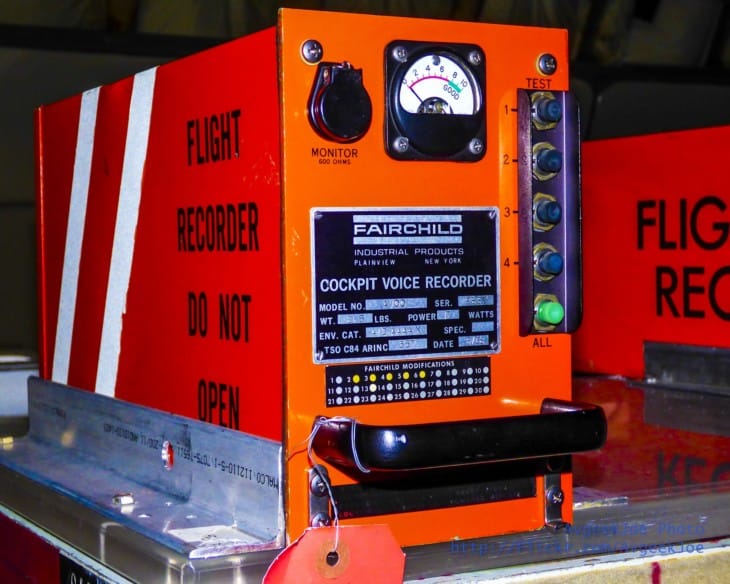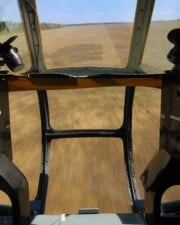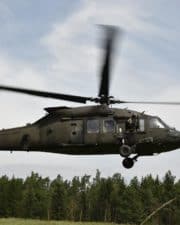Everyone knows that airplanes have devices called “black boxes.” A black box captures flight data and sound. In the event of a crash, investigators can use data from the device to determine the cause. So, do helicopters have black boxes too?
Table of Contents
TLDR – Helicopters rarely have black boxes. The FAA does not require flight recorders on most helicopters. However, helicopter owners may choose to voluntarily add a recorder.
Why Don’t Helicopters Have Black Boxes?
Installing a flight data recorder and cockpit voice recorder costs money. The equipment also requires maintenance. As the FAA does not require most helicopters to have flight recorders, helicopter owners typically choose not to install them.
A “black box” refers to two separate devices – the flight recorder and the cockpit voice recorder. The FAA requires a cockpit voice recorder in any multi-engine, turbine-powered airplane or rotorcraft with six or more passengers and two pilots. If the aircraft or helicopter only requires one pilot, the passenger count increases to 20.
A flight data recorder is required on all aircraft and rotorcraft with seating for 20 or more passengers. These rules exempt most helicopters from requiring a voice recorder or a flight data recorder.
The National Transportation Safety Board (NTSB) has attempted to persuade the FAA to require flight recorders on helicopters for many years. In 2011, the NTSB requested data recorders on all helicopters after a medical helicopter crashed, killing four people.
According to the Associated Press, the FAA claims that they cannot justify adding the mandate, as the benefits of flight recorders are difficult to identify. They also claim that you cannot quantify the benefits because the lack of a flight recorder can never cause an accident.
After the death of nine individuals, including basketball player Kobe Bryant, in a helicopter crash, the NTSB and politicians again pushed for black boxes on helicopters. A bill was introduced to the house of representatives requiring helicopter data and voice recorders.
The bill was submitted by representative Anthony Brown of Maryland. It would require a black box on any helicopter with one or more passenger seats and one or more pilots.
Representative Maxine Waters co-sponsored the bill. However, it has not gained any additional cosponsors since it was introduced in March of 2020.
What Does a Black Box Do on a Plane?
A black box typically includes two components. The flight data recorder (FDR) is responsible for capturing flight data while the cockpit voice recorder (CVR) captures sounds from inside the cockpit. Investigators can use flight data to determine when, where, and why a plane crashed.
Modern FDRs are required to record a minimum of 88 parameters several times per second. However, some FDRs may record additional parameters. The FDR can continue to record for 17 to 25 hours.
The device is wrapped in stainless steel or titanium and it is heavily insulated to withstand a crash. After a crash, a locator beacon emits an ultrasonic “ping.” The beacon can operate for 30 days.
The CVR is a type of recorder used to record audio instead of flight data. It captures the sound in the flight deck, which allows it to record the pilots. In the moments leading up to a crash, the pilots are likely to discuss the situation, giving investigators more details for piecing together the cause of the crash.
CVRs were originally required to record 30 minutes of audio. In 2008, following recommendations from the NTSB, the FAA increased the minimum duration to two hours of audio.
After the development of digital recorders, manufacturers could produce smaller CVRs and FDRs. Many modern black boxes are now combined units called Cockpit Voice and Data Recorders (CVDRs).
Why Are Black Boxes Not Black?
The US Civil Aeronautics Administration, the precursor to the FAA, required all planes weighing over 20,000 pounds to carry flight recorders. In 1965, cockpit voice recorders were added.
These devices were introduced, many aircraft components were housed in rectangular black boxes. The original recorders were simply housed in similar boxes, but with thicker metal to withstand crashes.
Several years later, the FAA required the black boxes housing the recorders to be painted bright orange, making them easier to retrieve from a crash site.
People continued to call the devices “black boxes,” as they were originally placed in rectangular black boxes. Others believe that the name comes from the charred appearance of the box after a crash.
Related Posts













